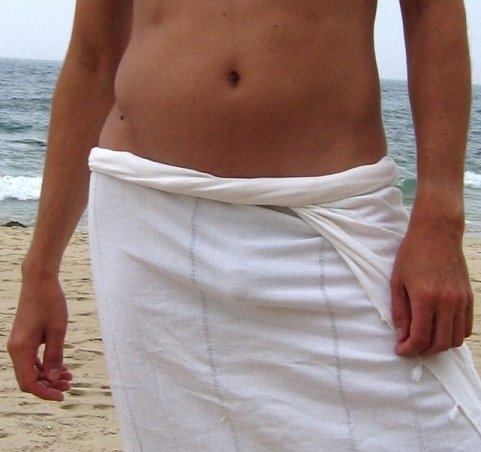Ecce Homo

Above is the image of Christ that I came across while visiting the Isabella Stuart Gardner Museum for the Gentile Bellini exhibit several weekends ago. It was Bellini’s brother Giovanni (c. 1430-1516) or someone in his immediate circle who created the above work, entitled Christ Carrying the Cross (c. 1505-10, oil on wood, Isabella Stuart Gardner Museum, Boston).
The painting isn’t large. In fact, it’s easy to miss, tucked away in a corner of the Titian Room. I had seen it on a postcard in the gift shop and had to ask a security guard about it, because it’s so difficult to find.
I fell in love with it as soon as I saw it up close. Perhaps it would be more accurate to say that I fell in love with the model. I found myself thinking a lot about him. Who was he? Was he a young priest who struck Bellini as especially Christlike? What about him inspired Bellini? It would be easy to conclude that it was his strikingly beautiful face, but perhaps there was something else. Maybe he wasn’t a cleric at all, but was simply a young man connected in some way to the patrons who paid for the painting. Perhaps he was simply a fellow artist. Whoever he was, he was gorgeous.
While looking for a high-quality digital image of Bellini’s Christ—I forgot to bring the postcard I had purchased to work for scanning—I came across his Pietà (c. 1474, tempera on panel, Pinacoteca Comunale, Rimini). Although the model who posed for this Christ isn’t nearly as handsome as the model discussed above, I thought I would include this image, if for no other reason than that it is another example of a Renaissance artist showing Christ’s pubes. Take a close look, they’re there. You might also take a close look at the two angels standing on the left. Notice anything interesting? I think that Bellini might have been having a bit of subversive fun here. Let me know if you think you see what I see.













8 Comments:
80 years old... in th 16th century. Wow, quite a lifetime there.
I can't say that I am much of an art critic, but I find the lighting rather interesting. I think that sets a bit of a mystique about the figure of Christ (the model) that makes him a bit .... I don't know.... remote?
As for the second pic... the pubes were probably not much of a shocker at all (to the people of his time). If I recall correctly, there are a number of early Rennaisance works depicting the crucified Christ nude.
Which would have been technically accurate, as the subjects of Roman crucifixions were typically stripped prior to being nailed up to the cross.
As for the cherubs, I think I see it too, but I didn't notice it on the first few glances. I'll chalk up what I may be mistaking for a ..... to be an effect of the painting being so aged, or possibly a scanning/photography error.
Don't let Ashcroft get his mitts on that pic, or he'll have it totally repainted to show him in a business suit, and the cherubs in school uniforms! (yes despite my change of thinking recently... I still think Ashy and Rumsy are a couple of tools).
Beautiful. Have you heard the song 'Ecce Homo' by Serge Gainsbourg the French reggae legend?
Excellent blog! Will keep visiting.
while there are some examples of pubes in art prior to the 20th century, they are the exception rather than the norm.
What really strikes me about the second picture aren't the cherubs on the left (and it took me a while to realize what you were talking about heh), but it's the expressions of the two you can see.
The one on the right seems to be saying "Oh pull-ease!" while the one on the left seems to be saying "Yeah, so. Whatever". Then again, it's all subjective now isn't it :)
Have a great weekend!
Yes I see them also.
Falling in love. It's such a common phrase we hear and used. Yet, its meaning is so deep, so profound, known only to those who had experienced it. You must be a real art admirer for using that for a painting.
thanks, brad :)
i had the same reaction to this painting when i visited the museum today. what a strikingly realistic and exquisite treasure.
Post a Comment
<< Home